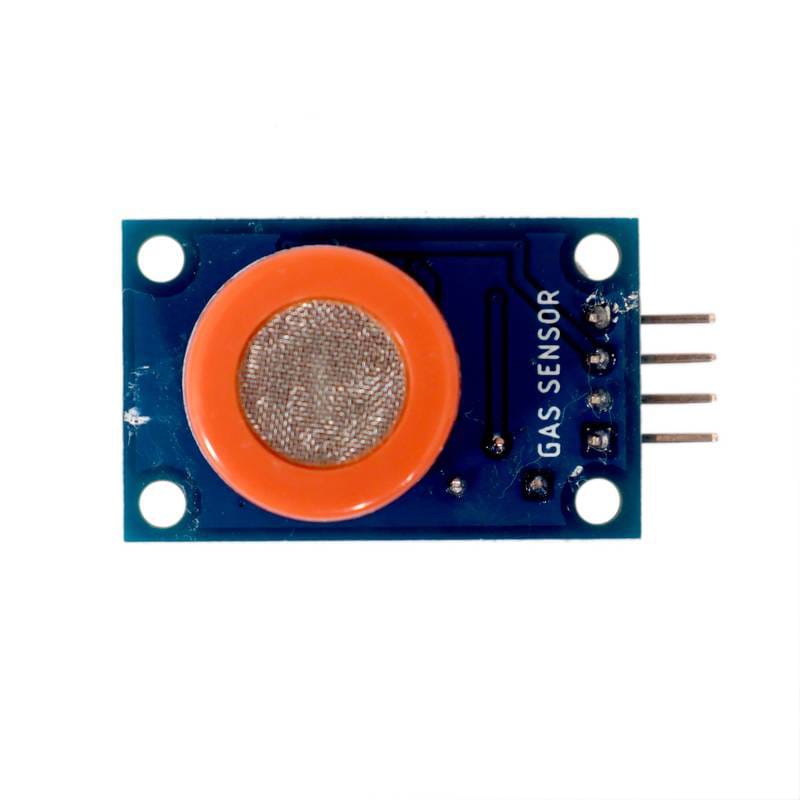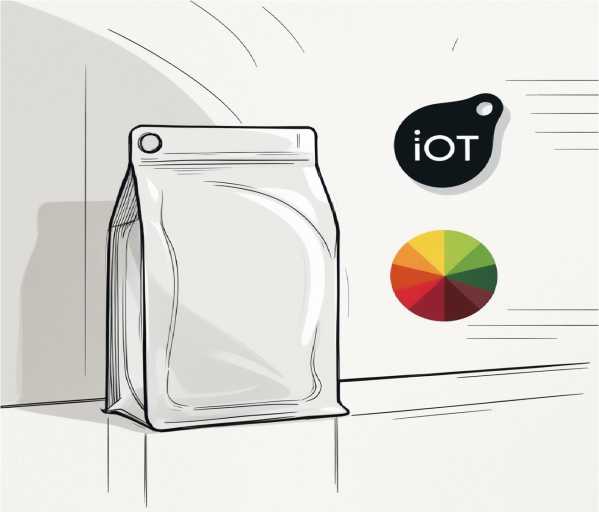
PROJECT
SMART PACKAGING WITH IOT TAGS
| Suraj Hulagur | AUTHOR | ACTIVE |
| Varsha Shubhashri.M | COORDINATOR | ACTIVE |

SMART PACKAGING WITH IOT TAGS
Centre for Technology Alternatives for Rural Areas (CTARA)
--
Introduction
Food spoilage during transportation and storage is a major challenge for farmers, leading to financial losses and wastage. There is no real-time system to detect early signs of spoilage, making it difficult to take preventive action.
To solve this problem, we developed a smart packaging system that monitors temperature, humidity, and ethylene gas concentration. This system alerts farmers and sellers about spoilage risks, helping them reduce waste and increase profits.
Problem Statement
Farmers suffer economic losses due to undetected food spoilage. Spoiled produce leads to supply chain inefficiencies and lower earnings. There is no real-time detection system for spoilage during storage and transport.
Initial Ideas and Changes Made
Initially, we explored different methods to detect spoilage.
- One approach was using a pH sensor to track spoilage. However, we found that pH sensors require penetration into the fruit or vegetable, which would increase oxidation and speed up rotting.
- Another method we considered was pH paper, but it requires an aqueous medium, which also accelerates oxidation.
Since fruits release ethylene gas during ripening and in larger quantities when they start rotting, we decided to use an MQ3 sensor to detect ethylene levels as a non-invasive method for spoilage detection.
Research and Similar Technologies
While researching, we found that other companies have developed similar IoT-based freshness monitoring systems:
- Zest Labs uses IoT tags with temperature and humidity sensors to estimate freshness, similar to our approach. However, they do not measure pH.
- Clarifruit uses Quality Control (QC) methods to assess texture, size, color, and firmness, but it does not measure pH directly.
We also learned that pH sensors work using a glass electrode and a standard electrode, following the Nernst equation. However, since they require direct contact with the fruit, they increase rotting speed, making them unsuitable for our project.
Proposed Solution
Our smart packaging system includes:
- IoT-based monitoring of temperature, humidity, and ethylene gas levels.
- Real-time alerts sent to a mobile app or webpage when spoilage conditions are detected.
- A color indicator system on the packaging that visually represents spoilage status:
- Green indicates freshness.
- Yellow acts as a warning.
- Red signals spoilage.
Key Features
The system consists of several essential components:
- An IoT tag collects and transmits environmental data.
- An MQ3 sensor detects ethylene gas levels to determine the ripening or spoilage stage.
- A DHT11 sensor measures temperature and humidity inside the package.
- The ESP32 microcontroller processes data from the sensors and sends alerts when conditions exceed safe thresholds.
- A mobile app or webpage displays real-time sensor data and notifications for users.
Hardware Components Used
MQ3 Gas Sensor
The MQ3 sensor detects ethylene gas, which is released by ripening and rotting fruits.

IoT Smart Packaging System
The smart packaging integrates an IoT tag to monitor environmental conditions inside the packaging.

IoT Tag
The IoT tag is responsible for collecting and transmitting sensor data to the monitoring system.

How It Works
- Sensors continuously collect data from inside the package.
- If ethylene gas levels exceed a certain threshold, the ESP32 microcontroller processes the data and sends an alert via Wi-Fi or Bluetooth.
- Farmers and sellers receive notifications on their mobile phones.
- The packaging includes a color indicator system, providing a visual warning if the produce is at risk of spoilage.
Expected Impact
- Reduces food wastage by detecting spoilage early.
- Farmers earn higher profits by ensuring fresher produce reaches the market.
- Improves the supply chain as real-time monitoring helps in better transportation and storage decisions.
- Enhances food sustainability by minimizing losses.
Technology Used
The system relies on key hardware and software components:
- MQ3 sensor - Detects ethylene gas to track ripening and spoilage.
- DHT11 sensor - Measures temperature and humidity inside the packaging.
- ESP32 microcontroller - Processes data and triggers alerts.
- Wireless IoT tag - Transmits data to a mobile app or webpage for remote monitoring.
Estimated Costs
- IoT tag cost: ₹300 - ₹500 (lower in bulk orders).
- Packaging material: ₹5 per unit (uses existing materials).
- Total estimated cost per unit: Under ₹1000 (reusable).
Limitations
- Initial cost may be high for small-scale farmers.
- Requires a basic mobile phone or internet access to receive alerts.
Implementation Timeline
| Phase | Duration |
|---|---|
| Research & Planning | 15 days |
| Prototype Manufacturing | 1 day |
| Testing Phase | 1 month |
Testing and Future Scope
- Controlled lab tests will validate sensor accuracy.
- Field trials will assess performance in real-world conditions.
- Future improvements include AI-based predictive analysis to identify spoilage trends based on collected data.
Conclusion
This smart packaging system provides a cost-effective, real-time monitoring solution to reduce food spoilage and increase profits for farmers and sellers. By using non-invasive ethylene gas detection instead of pH measurement, it ensures accurate freshness tracking without affecting the produce.